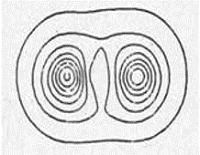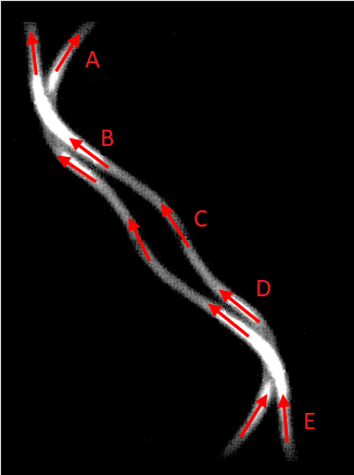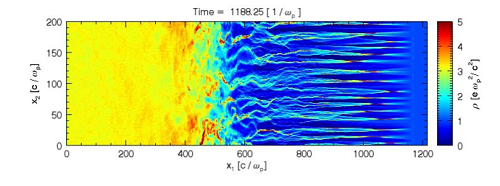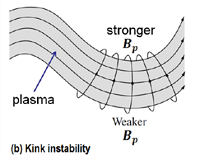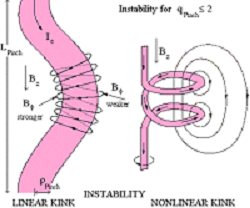A good set of questions
For a number of years I belonged to a group called the Natural Philosophy Alliance which was made up of over 1000 dissident scientists worldwide. I presented plasma and ZPE ideas at their conferences and they peer-reviewed and published some of my papers. But they were dissidents, and each had his own theory and was reluctant to consider other options. There was interaction on ideas, but none became “accepted” as a general alternative position. One thing we were all agreed upon was that the current Standard Model in physics, astronomy etc. is wrong. I have also presented at the Electric Universe group and their conferences on a number of occasions, but they have a strange cosmology called a Saturnian Reconstruction for the events within the Solar System. Insistence on this cosmology means they will exclude any ideas that will go against it, even from plasma physics. They effectively filter out Bible-based models, even though they agree that the Standard Model is incorrect! There is more about the Saturnian reconstruction.:
Yes. The scientists from the Electric Universe or Thunderbolts group do promote plasma cosmology. Unfortunately, it is used to support their Saturnian Reconstruction ideas. As a result, they are not open to some important evidence from Plasma physics that can be applied to astronomy and our Solar System. If they did, they could make predictions and gain credibility. Instead, it seems they have shot themselves in the foot, and limited their effectiveness. Worse, because of their Saturnian Reconstruction ideas, they are unacceptable to mainstream science and are thereby considered a fringe group. It is important to note the difference between the Electric Universe (& Thunderbolts) and the Plasma Universe research. EU is pushing its own cosmology as a huge commercial organization. PU is purely scientific research. The problem is many equate EU with PU and reject both because of EU’s emphasis. In the days of Anthony Peratt at Los Alamos National Labs (who started PU) there was a whole group there who were studying Plasma Physics applied to astronomy. Now it is more limited. Basically, only the members of the IEEE (International Electric & Electronic Engineers) organization and a few others who are continuing to explore. Some principals of the EU group are as well, though with their outlook colored by the Saturnian problem. I monitor some of their material as occasionally something of importance shows up.
Absolutely! That is what astronomer Tifft noted and which can only be explained by ZPE processes, or something exotic as Tifft himself has attempted in his book “Redshift: key to cosmology”, in 2015.
The answer is, theoretically and mathematically, yes. As far as actual lab experiments to do the complete process is concerned, the answer is no. There are two reasons for that. First the equipment needed to produce the initial conditions in the universe can be extremely expensive. While the general principles have been verified experimentally, the rest must wait until some funding is available for someone who thinks the project worthwhile. Second (and this is the biggest problem), the vast majority of physicists have no wish to overthrow the existing paradigm with something of a new approach. In other words, there is a lot of scientific inertia that makes it impossible to break through on all these fronts. It is for this reason that articles by those involved in the history of science condemn the currently enforced status quo, or ask why physics has made no progress in the last 40 years as this one does. In conclusion on this point, I would also mention the strong evidence presented by plasma fusion processes on the Sun’s surface. Those processes have produced all the elements in their known abundance on the solar surface by fusion. The only exception is an excess of hydrogen, which is to be expected from the formation process.
Let me begin this segment with a key piece of information from this diagram.
In both cases (a) & (b) we have a horse-shoe magnet with the North and South poles marked and the magnetic field between them shown. In example (a) on the left, we have a line L carrying an electric current through the rod from B to A and back up to its source. As a result of the interaction between the fields in the magnet and the rod, the rod experiences a force pushing it out to the right. In the case of (b) on the right, we have a different arrangement. Here it is arranged that the rod carrying the electric current, again from B to A, has that current aligned with, or along, the magnetic field. This “Field-Aligned Current” experiences no forces acting on it. A current in a magnetic field experiences a force in ALL positions EXCEPT when it is parallel to the magnetic field. In that case, it is in a force-free environment. At any other angle, a force will act on the rod. Now notice the Birkeland currents in this next diagram on the left. They are traveling in the same direction as the AMBIENT magnetic field. This is a force-free environment for those currents. This means that the forces of attraction between the current-carrying filaments and their circling or induced magnetic fields will operate without disruption from external fields.
The image on the right shows the attractive force acting on parallel wires carrying currents. On the left the currents are in the same direction, and the force is attractive. On the right the currents are anti-parallel, and the force is repulsive. We are interested in the left-hand example (a) here. Note that in the right-hand example (b) the induced magnetic field from the wires (shown by the circling lines), is “pushing” against itself resulting in the repulsion of the wires. We now replace wires carrying currents to plasma filaments as shown by the experimental results below. The lab experiments show that in space the two current filaments may be up to 115,000 light years wide. Their interaction becomes rapid once their centers are that distance apart. As the two filaments approach, the plasma between their centers becomes compressed. Three diagrams of the early magnetic field behavior over time show this as they get closer.
Peratt notes that while these diagrams give a cross-sectional view at right angles through the filaments, the vertical interaction distance over which the object is formed is limited by a ‘micro-pinch’ in the filament itself that is typically less than its width. The final result is a disk-like object that tends to be thicker in the middle & tapers towards the edge as shown later. The velocity of approach of the attracted plasma filaments is about 1000 to 1200 km/s using the conversion from lab data to cosmic bodies. Near minimum separation it may reach several thousand kilometers per second. This minimum separation is determined by short-range repulsive forces from inherent anti-parallel azimuthal currents. As a result of the action of these azimuthal currents, collision does not occur. Instead, the translational momentum is converted to angular momentum. As this happens, the initially circular cross-sections are deformed into oval shapes that then take on a ‘jelly-bean like’ profile just before the spiral arms start to grow. The third picture above shows the lab results at that stage. Out in space the second object above is called a radio galaxy. By the third diagram, as pressure on the central plasma becomes intense and the plasma very dense, with a concentration of electric and magnetic fields, a large plasmoid forms with its axial jets. A quasar has been born. As the interaction continues, this next sequence of events follows. NOTE: the 1st 4 panels have been discussed with the detail in the three black diagrams above. We start with panel 5 at top right:
Peratt’s experiments resulted in the following description. 1) The plasma core forms and begins to rotate almost like a solid body as the filaments interact. 2) The spiral arms emerge from the core and grow in length as they trail out along the magnetic field isobars. 3) At the same time as the arms are lengthening, they get thinner (so while they originally may have been almost as thick as the core, their extending & thinning gave the central nucleus its prominence). 4) As the arms thin out, the current strength lessens. The change in current strength causes filamentation instabilities (producing many more sub-filaments in the arms instead of the original few major ones). 5) Because the currents in the sub-filaments are changing, the surrounding magnetic fields will become unstable and pinch, forming stars like beads on a string. The stars will have their spin axes lined up along the filaments. This means that the plane of the stars’ equators will be at 90 degrees to the individual filament direction.
The galaxies are disk-shaped (with a hump in the middle) and at right angles to the 2 or more filaments because this is the plane of attraction of the circling magnetic fields as these sorts of diagram show. The vertical extent of the interaction is limited to less than a filament width by a micro-pinch and double layer forming within that distance. Then, when galaxies form with their spiral arms in the plane of the main disk, the arms are composed of secondary filaments through which secondary currents flow. A z-pinch in any of these secondary filaments in the arms will then be at right angles to that secondary filament’s alignment. The result is again a disk-shaped area at 90 degrees to the line of the filament. In the case of the primary filaments forming galaxies, those filaments are large and double or multiple. Within the spiral arms, they can often be single, multiple or branching. They form a string of stars with their axes lined up along the filament from the successive pinches shown here. Sometimes that multiple pinching on a filament is called a “sausage instability.
Note the star forms at the pinch, BUT the plane of the magnetic field lines doing the pinching is also the plane of the equator of the star, and the plane of any planets formed in that system. That plane is at right angles to the current in the secondary filament. You go on in your diagrams as follows:
Yes.
Yes.
No! Electro-magnetic forces in space are stronger than gravity.
The plasma filaments remain as non-interacting plasma filaments. That is why we can trace the filaments in which galaxies are embedded out in space. Thus the region of the universe near us looks like this:
The galaxy groups and clusters are marked as is our Local Group. The filaments have not disappeared, they are simply not as prominent as a galaxy or a galaxy cluster is. Furthermore, sometimes these filaments are only apparent in certain wavelengths (like Infra Red or UV).
The axis of the core is parallel to the direction of the interacting filament. This means that the spiral arms are in the plane of the magnetic field interactions perpendicular to the axes of the filaments.
The interacting magnetic fields of the approaching filaments exist at 90 degrees to the filament axis. It is in this plane that all the action takes place. This interaction does not extend infinitely in both directions as it is limited by a “micro-pinch” and the formation of a double layer in the plasma. These extend vertically along the axis to a maximum of one filament width. It is only the interaction in this distance which forms the object. Peratt’s articles state that the interaction to form galaxies only begins when the filaments are about 1 filament radii apart. When the dense galaxy core forms, its axial extent is typically about one filament width or less depending on the interaction parameters. Lab experiments & space data show this
A single filament can break up into multiple filaments as a result of what is known as a “filamentation instability” or sometimes it is called a Wiebel instability. This is common in laboratory plasmas. Below, a major filament is shown breaking up into lesser ones.
(the next illustration is from the questioner)
Yes. This is called a filamentation or Wiebel instability. We have seen it in the lab, experimentally, as shown below. On the left it was originally one filament. Then it split up into many filaments. In the lab they persist over a short distance and then fade out, as shown on the right.
Because the pinch works from the outside in, the planets formed 1st and Sun last.
Where the pinch is acting on a filament, the plane of the pinch is also the plane of the magnetic interaction and also the plane of the star’s equator. The pinch in that plane causes the lesser filaments to form spheres starting from the outside and working inwards so the star in the center lights up last after the suite of planets has formed.
First a diagram – the left hand rule for motors:
Translate this to Solar System bodies. Imagine the sun (in the center of the Solar System) with its spin axis vertical. That spin axis points approximately along the filament out of which the Solar System was formed. The electric current flows along that filament (vertically in this case). So the left index finger (image above) indicating current direction must point vertically in our case. The magnetic field is at right angles to the current and has just caused the pinch to form the planets and sun. So the magnetic field finger is horizontal – the plane of the sun’s equator and the orbits of the planets. These two components then exert a force to spin the Sun equatorially in its main part of the filament. But the smaller filaments also have lesser currents exerting a pressure on the planets and tending to spin their equators also – each planet spinning according to the strength of the current flowing in their individual filament. This situation existed in the early moments of the Solar System and got the sun and planets spinning at their individual rates depending on the currents flowing. Later, as the magnetic pinch died away and the main current stabilized to the sun, the system had already been “wound up”. It is difficult to change the spin rate of massive bodies, so that spin rate has continued for 8,000 years, presumably with some slight, but not significant, run-down. The orbiting of the planets around the sun has a similar origin. But after the magnetic field tapered off when the pinch was exhausted and the main current stabilized, then gravity took over and has been predominant ever since.
In a plasma filament, a “kink instability” will cause the filament to take up a variety of shapes. This can vary from the examples shown above from a linear kink to a non-linear kink with a corkscrew lab example on the right. If Venus and Uranus were formed from one or other filaments behaving like this, then their unusual characteristics are explainable.
Yes. However, it goes further than that. The asteroid belt consists of three different types of asteroid. Their composition corresponds with the mantle and core of a planet, and the composition of its moon. The breakup of both the planet and its moon occurred because it had up to 20% water in its mantle rocks. Radioactive heating of its interior drove the water to the surface and the mantle disintegrated in an explosive episode. Similarly, radioactive heating tended to liquefy the core. When rock and metal expand they gain at least 10% in volume, so the core exploded also. Finally, for the same reasons, the moon of that planet exploded. These three rocks gave rise to the 3 types of asteroid and meteorites. From Cosmic Ray Exposure (CRE) ages, we can assess the original break-up times. The Mantle of the Asteroid Planet broke up from about 800 Million Atomic Years ago (MAY) with a peak around 600 MAY. The core broke up about 260 MAY and the moon about 70 MAY. These are each about 5 MAY before the 3 catastrophes on earth ending the geologic Eras at 600 MAY, 250 MAY and 65 MAY. These events correspond with the Flood, Babel and the Peleg continental division. There was also a planet in the outer Solar System which exploded for the same reason giving rise to the Kuiper Belt. The objects which came into the inner solar system caused what is called the “Late Heavy Bombardment.” There are features throughout the solar system linked to this event. On earth, the impacts of these objects gave rise to what geologically are called the cratons, the stable cores of what are now the continents.
The original asteroid planet was destroyed in two steps as a result of radioactive heating of its interior. That vaporized the water in the crystalline mineral structure of the mantle and the resulting pressure blew the mantle apart. Note that the plasma model has Marklund Convection in the plasma filaments which formed the planets. This meant that planets started off cool & already layered with radioactive elements were concentrated in planetary cores. This rapid radioactive decay heated the interiors of each planet. The asteroid planet breakup & its moon, supplied material for moons for Mars and perhaps for the outer planets. But note also that the Kuiper Belt explosion also gave objects which form moons such as Hyperion around Saturn. The comets were largely formed from the Kuiper Belt break-up, though some may have come from the asteroid belt. Note that Jupiter “captured” some of the Kuiper Belt objects and changed their orbits to make them become short period comets. Finally, the craters throughout the Solar System all result from the Kuiper Belt and asteroid planet break-ups. These break-ups resulted in a combination of impact craters and electrical discharge craters (the latter due to the potential difference between the inner and outer solar system).
Probably the Earth and moon were formed by “twin” filaments with one filament being absolutely dominant. Our moon does not have the composition of an asteroid belt (or Kuiper Belt) object. Rather its filament was forming a body that had access to the same or similar supply of elements that the earth itself had. Gravitational astronomy is tying itself in knots trying to find a scenario in which the Moon could form from earth-like material. They are looking at collisions with a Mars-sized body to do that. That presents its own set of problems. Plasma astronomy gives a reasonable answer. |




